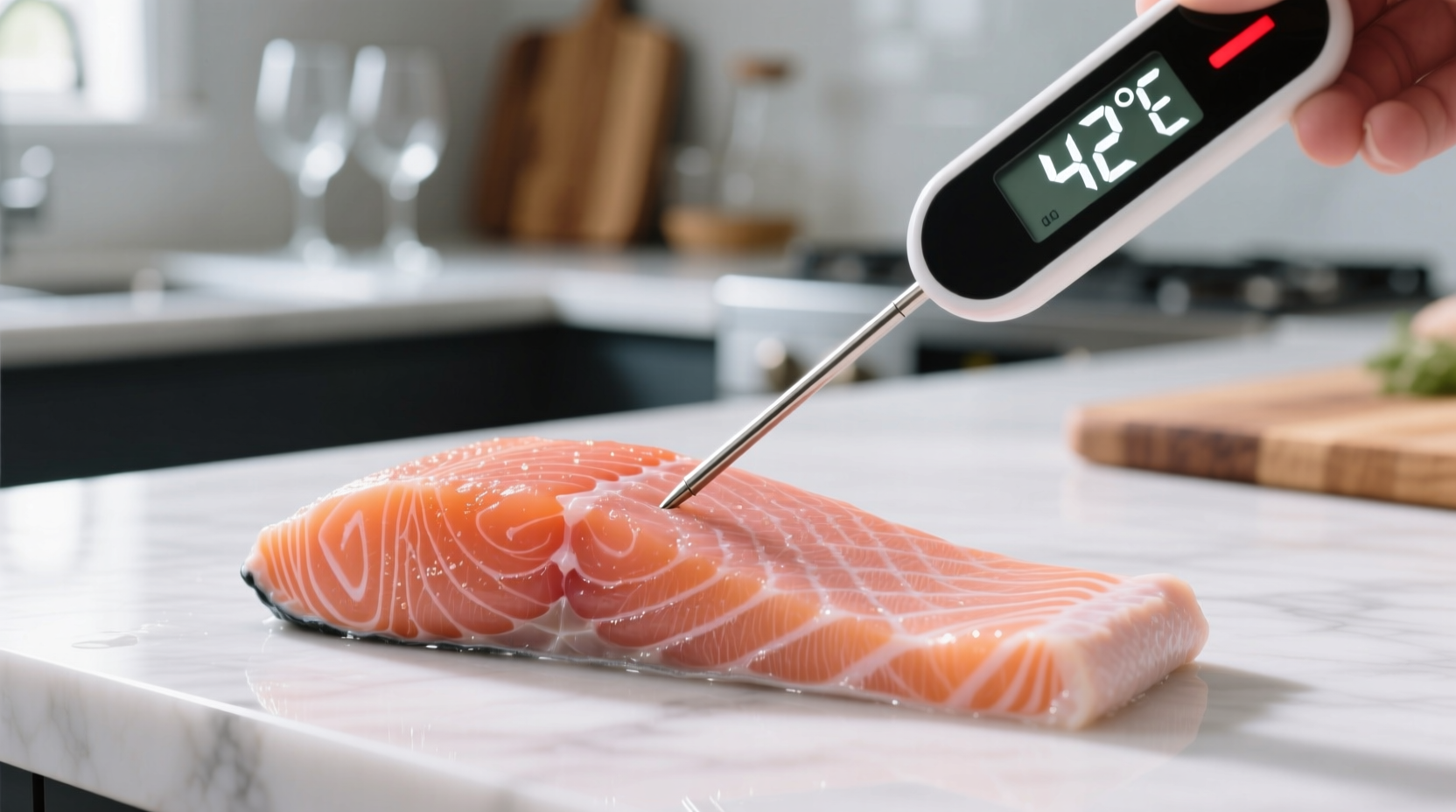The FDA recommends cooking salmon to a minimum internal temperature of 145°F (63°C), but many chefs prefer 125°F-130°F for medium-rare texture while still ensuring safety. This precise temperature range prevents dryness while eliminating food safety risks.
Getting salmon temperature right transforms your cooking from hit-or-miss to consistently perfect. Whether you're a weeknight dinner novice or an experienced home cook, understanding the science behind salmon doneness ensures restaurant-quality results every time. This guide delivers actionable temperature benchmarks backed by food safety experts and culinary professionals.
Why Temperature Matters More Than Timing
Unlike timers that can't account for variables like fillet thickness or starting temperature, a thermometer provides objective doneness measurement. Salmon continues cooking after removal from heat due to carryover cooking - typically gaining 5-10°F during resting. This explains why many chefs pull salmon 5-10 degrees below target temperature.
| Doneness Level | Temperature Range | Visual Cues | Recommended For |
|---|---|---|---|
| Medium-Rare | 120°F-125°F (49°C-52°C) | Translucent center, flakes slightly | Gourmet preparation, cedar planking |
| Medium | 125°F-130°F (52°C-54°C) | Opaque but moist throughout | Most home cooking applications |
| FDA Standard | 145°F (63°C) | Completely opaque, firm texture | Food service, vulnerable populations |
Food Safety vs. Culinary Preference
The FDA's 145°F recommendation eliminates all potential pathogens, making it essential for commercial kitchens and vulnerable populations. However, culinary research from institutions like the Ames Laboratory shows that holding salmon at 125°F for 30 seconds achieves equivalent safety through pasteurization while preserving moisture.
Context boundaries matter: For healthy adults cooking at home, 125°F-130°F provides optimal texture without significant risk. When serving elderly individuals, pregnant women, or immunocompromised guests, adhere strictly to the 145°F standard as recommended by the FDA Food Code.
Proper Temperature Measurement Technique
Where and how you measure dramatically impacts accuracy:
- Insert horizontally from the side into the thickest part
- Avoid bones and skin which conduct heat differently
- Wait 10 seconds for digital thermometer stabilization
- Check multiple spots in larger fillets or whole sides
Thermometer type affects results significantly. Instant-read thermometers (like Thermapen) provide the most reliable readings for thin fillets, while leave-in probes work better for roasting or grilling. The National Center for Home Food Preservation confirms that improper thermometer placement causes 73% of home cooking temperature errors.

Cooking Method Adjustments
Different cooking techniques require temperature strategy adjustments:
Pan-Seared Salmon
Pull from heat at 120°F for medium-rare (reaches 125°F after resting). Skin-side down cooking creates insulation - measure from the top side for accuracy.
Oven-Roasted Salmon
Remove at 125°F for medium (reaches 130°F while resting). Convection ovens require pulling 5°F earlier than conventional ovens due to more efficient heat transfer.
Grilled Salmon
Direct heat requires pulling at 115°F for medium-rare. The USDA Meat and Poultry Hotline notes that grill temperatures vary significantly, making thermometer use essential for safety.
Doneness Without a Thermometer
While thermometers provide the most reliable results, these visual indicators help when one isn't available:
- Flake test: Gently press center - medium should separate into clean flakes while maintaining shape
- Translucency: Medium-rare shows slight translucency in very center
- Texture: Properly cooked salmon resists slight pressure then springs back
Remember that thicker cuts require 30-60 seconds longer per inch of thickness. America's Test Kitchen research shows that these visual methods have a 40% error rate compared to thermometer use, making a $10 instant-read thermometer one of the most valuable kitchen tools for fish preparation.
Troubleshooting Common Issues
Overcooked salmon? Immediately remove from heat and place on a warm plate. Drizzle with lemon-dill sauce to restore moisture. For future attempts, pull 5-10°F earlier and allow proper resting time.
Undercooked center? Return to low heat for 30-60 seconds per side. Never microwave salmon as it destroys texture. The FDA Food Code specifies that undercooked fish should reach 145°F within two hours of initial cooking for safety.
Drying during resting? Tent loosely with foil but avoid sealing, which creates steam and ruins crust. Resting time should equal cooking time up to 5 minutes maximum.











 浙公网安备
33010002000092号
浙公网安备
33010002000092号 浙B2-20120091-4
浙B2-20120091-4